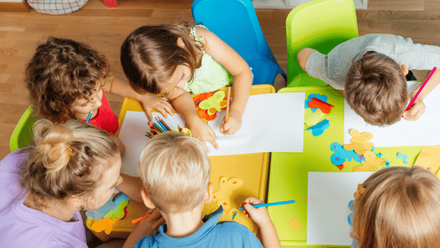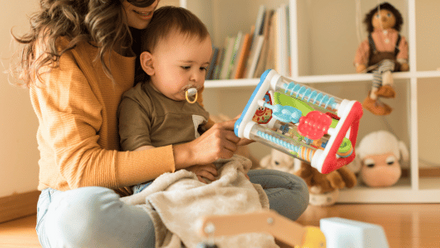How to support children in early education and care learning English as Additional Language
In the UK, over 1.6 million children in state-funded compulsory education are recorded as speaking English as an Additional Language (EAL) and this number is continually rising. In England, 43% of children who were recorded as being new to English achieved a good level of development (GLD) at the end of reception in their Early Years Foundation Stage Profile (EYFSP), compared to 88% of those who were recorded as fluent in English.
We know that the early years are a time for absorbing masses of information and provide a crucial foundation for later outcomes across all areas, including communication and language, and literacy. Therefore, early education and care provisions provide a unique space to develop language proficiency and all professionals should be equipped to support children for whom English is not their native language.
In this article, we are going to explore how to support you to create the best learning opportunities for children who are learning English as an additional language and their native language too.
What is English as an Additional Language (EAL)?
Children who are identified as using EAL in early education and care are those who have been ‘exposed to a language at home that is known or believed to be other than English’. It is a broad term that aims to identify any child who is developing multi-lingual skills.
There are some important factors to acknowledge when working with learners using English as an additional language:
- Whilst a child will be learning English as well, it is important to support the language development of all languages the child is exposed to and integrate the cultural significance of this into daily interactions.
- Children may become conversationally fluent in a new language in two or three years but may take five or more years to catch up with monolingual peers in cognitive and academic language. Each child’s progress in unique and accommodations should be acknowledged when considering their abilities compared to monolingual children of the same developmental stage.
Evidence suggests that proficiency in English (in the UK) is the most significant indicator of academic achievement throughout life. Whilst variables such as gender, ethnicity and socio-economic background explain attainment by approximately 3-4%, proficiency in English language accounts for up to 22% variable. It is a clear indicator not only of the importance in supporting language acquisition in the early years but also the essentiality of providing adequate support at the earliest opportunity.
Young children’s brains are fascinating and developing at the fastest rate they ever will, producing over a million neurons every second. It is important to harness the power in the time where children are primed to soak up knowledge by exposing them to a rich environment filled with stimulation, including of language.
Top Tips
Let’s have a look at some of the ways we can support children speaking EAL. Remember, these tips are about best practice and wider inclusion: the techniques highlighted here are beneficial for improving access and opportunity for all children, not just for the benefit of children using English as an additional language.
Communicating with families
Involving parents and carers and building strong relationships with those at home is key to providing the best start for children, particularly of those for whom English is not the main language spoken in the home. Parents and carers who are using English with limited proficiency themselves are underrepresented themselves within the education sector and are less likely to have a full understanding of the UK education system.
It is important to keep this in mind when communicating the value of activities, relaying observations, and supporting transitions both within setting and onto primary school. Using translation tools to support communication, including involvement of other members of the community or apps to assist with translation are just one way to make sure parents and carers remain informed and connected to setting.
Appreciating culture
It is important to embrace, acknowledge and celebrate these moments with babies as they learn about the world around them in relation to home and beyond.
- Playing culturally significant music that is shared from home can be a great way to develop listening skills and relational awareness, whilst also developing a wider understanding of the world for other children in the room too.
- Pay attention to the calendar and draw upon a wide range of culturally significant events that allow all children to experience a diverse range of activities throughout the year. For example, using sensory trays to explore light and colour for Diwali with babies.
- Ask families to contribute ideas and share skills associated with their culture to further integrate the home learning familiarities into the learning in setting.
Aiding understanding with visual communication
Visual aids are useful for promoting inclusive communication with all young children but are shown to be particularly helpful for developing vocabulary and strengthening understanding with children using EAL.
- Associating pictures with both written text and spoken language helps babies to recognise the meaning of the words you use, not just their sound. Using single words with babies allows for a stronger understanding of key vocabulary and creates a culture of confidence for all.
Final thoughts
Having proficiency in more than one language is shown to have amazing benefits for children and multilingualism is something that should be embraced through a child’s life, starting at birth.
Babies are taking in language before they’re even born and their first 1000 days are crucial for developing communication and language skills they will use for the rest of their lives. Let’s play a part in this extraordinary journey by supporting children using EAL from the very start of their educational journey.






